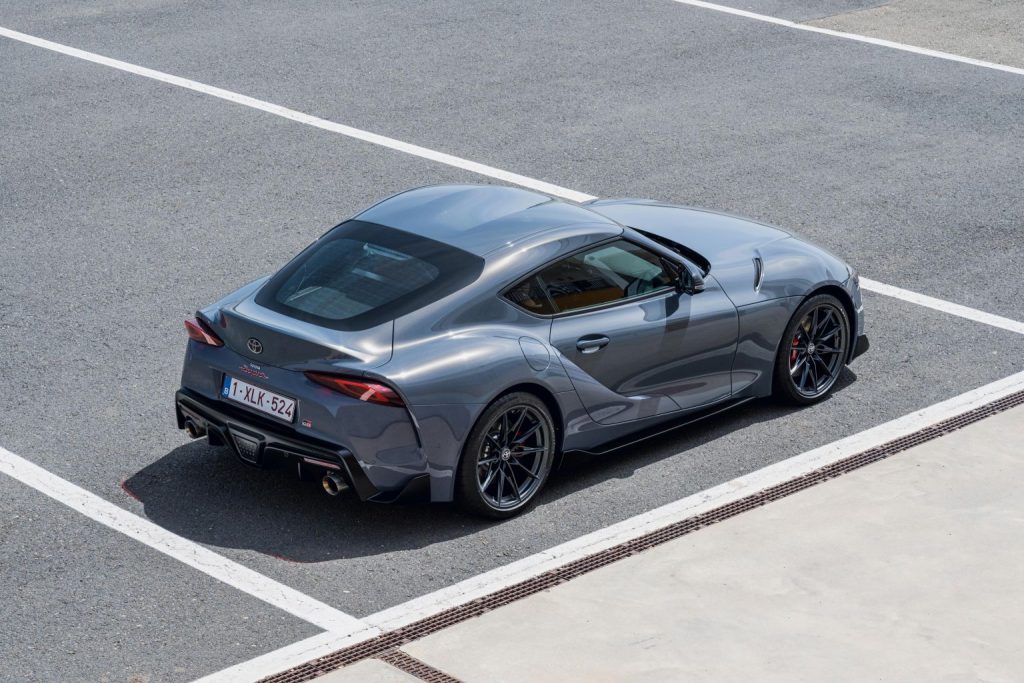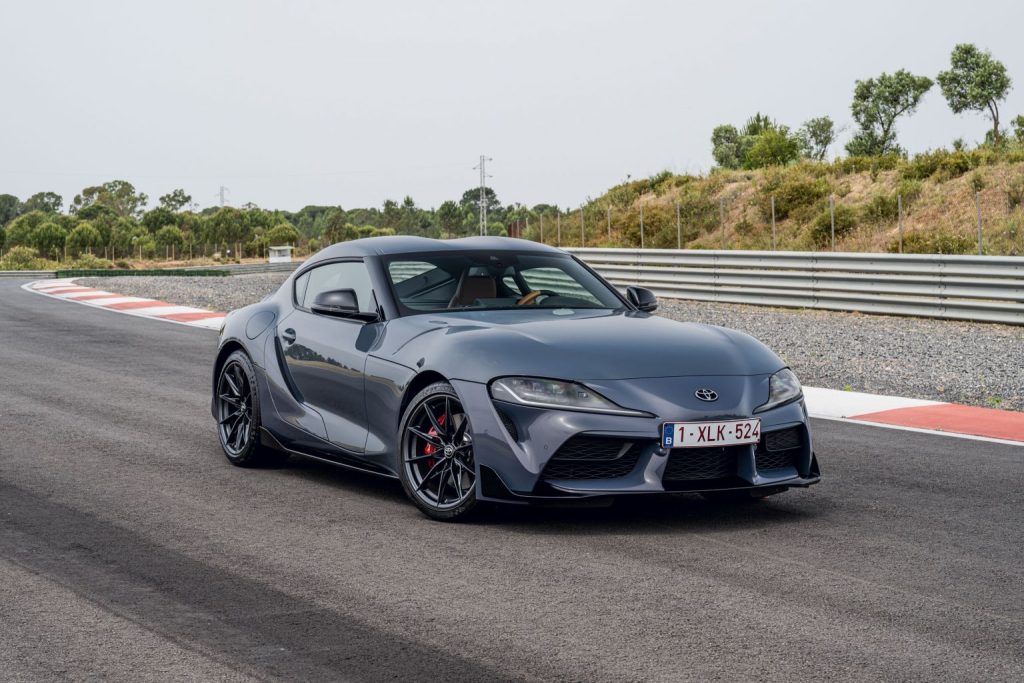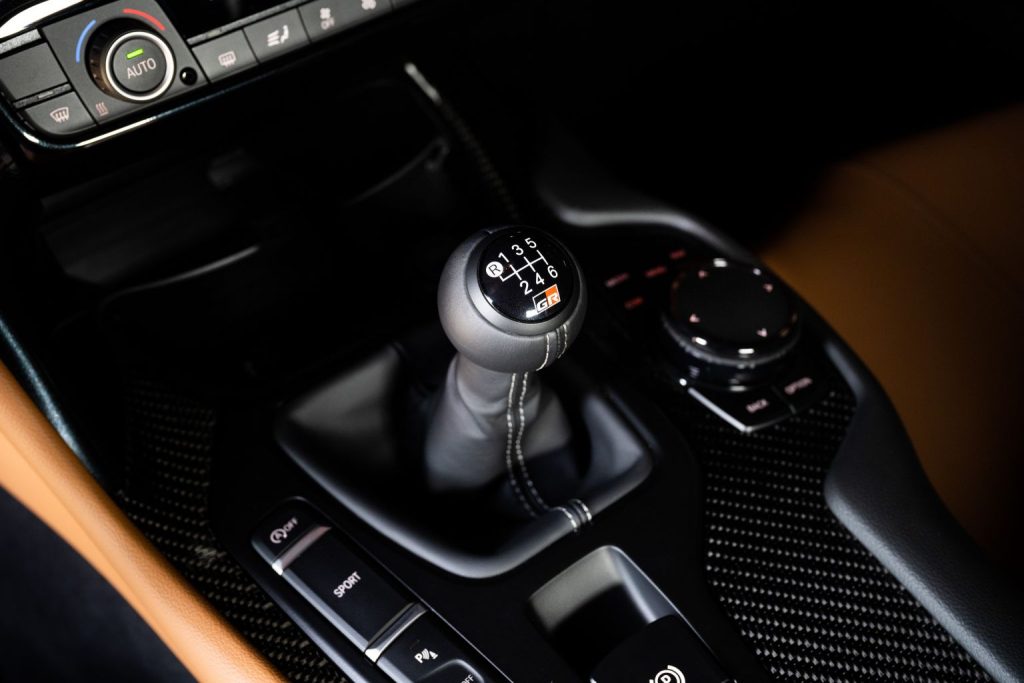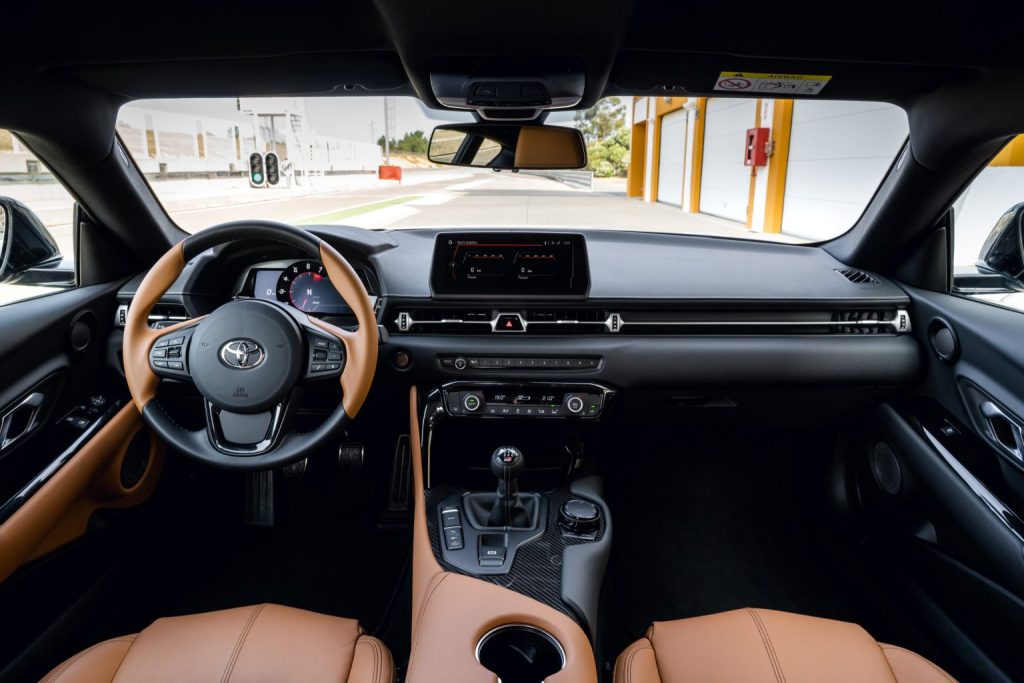Driven
Back to Library >Toyota GR Supra Manual review
Until now. The six-speed manual transmission we will come to shortly, but first I want to discuss the finer, less obvious changes Toyota has made to the GR Supra – all of which will be rolled out across all model variants this summer. There is nothing earth-shattering to report; no quantum leap, only minor forward steps. The dampers, for instance, have been retuned, as has the power steering. And get this – the rubber in the front and rear anti-roll bar bushes is vulcanised now, meaning it’s been treated at high temperatures to make it harder. I may never report a more infinitesimal upgrade than that.

But as any decent chassis engineer will tell you, the most minor changes to the right components can yield big results. It is possible to wholly transform the feel of a car by simply modifying steering and suspension components, or by retuning what is already there. Toyota has evidently been busy doing exactly that, the result being the first GR Supra I have longed to drive again.
Perhaps that is because on this particular launch event – in Spain once more, but this time close to Seville rather than Madrid – we were offered only two stints in the car, each time on circuit only and for just three quick laps at a time. So be aware that every driving impression you read from here on was gleaned in a setting for which the car was not primarily designed, in a matter of minutes not hours and without an outgoing model present for context.
But in order to feel how improved is the steering, to sense through the driver’s seat how much more communicative is this version than the last and to realise how cohesive the GR Supra now feels, it was plenty. Indeed you become aware of the upgrades Toyota has made from the very first corner, the crisper, more textural feel of the steering rack making itself known right away. Gone is the remote and distant quality of old that always kept you at arm’s length, in its place the clarity and precision you find only with the finest electrically assisted steering systems.

And with it comes tauter body control that means there isn’t that spooky moment of disconnect, that fleeting sense that the chassis isn’t going to bite at all but instead spit you off through this fast, committed corner. You feel confident in the car, leaning hard on its enormous grip and trusting it to execute your commands at once.
The car feels better balanced now, and when grip begins to bleed away it does so with a level of progression and communication that means you frolic along that seemingly treacherous divide like a tightrope walker. In that regard the GR Supra feels a lot like its smaller, less powerful brother, the GR86. The two cars have the same approachability at the limit – with more power and grip, you’re simply travelling faster in the Supra when that limit arrives.
The chassis changes all add up to a car that feels more overtly sporting and less like a compromised grand tourer. It gives the impression of being lighter now, as though it is leaning more deliberately into its sports car remit. Which, in fact, it is. In other markets there will be a variant called Lightweight, that soubriquet perhaps a stretch given the fairly modest 38.3kg weight saving. There won’t be a Lightweight variant in the UK, but the weight saving measures will be present and correct on the GR Supra Manual.

Most of that not-quite-40kg weight drop is down to the manual gearbox, which along with new wheels saves almost 22kg. The rest is down to changes to the stereo, plus manually operated rather than electrically powered seats. (Buyers will have the option of adding powered seats back in.)
I have scoffed in the past at car reviewers who have rhapsodised over the benefits of a marginal two-figure weight saving, dismissing their purple prose as vainglorious attempts to show off how keenly attuned are their car assessing powers. But I’m now about to do exactly that. We had only two sessions on track in the GR Supra as I’ve said – between each session we swapped from a lighter model to a regular one, and the difference between the two was meaningful.
I was as surprised by that as you may be right now, because we’re not even talking about 20kg. I tried the lightweight car first, switched into the heavier one and knew instantly that it was inferior. On track in particular, 20 additional kilograms is a significant burden, enough to make an otherwise lithe and agile car feel a bit lazier, fractionally less responsive and just a touch more in conflict with its own mass. This really is a car for which minor changes add up to a big difference.

The excellent BMW-sourced straight-six is unchanged. Turbocharged to 335bhp and 369lb ft it is strong, energetic throughout its rev range, responsive even from the lower reaches and it floods the cabin with a cultured six-cylinder howl. There isn’t the fizz and ferocity here that you get from a BMW M powerunit of a similar configuration, like the twin-turbo inline six that powered the previous M2 Competition. Nonetheless, this engine is still characterful and urgent enough in a sea of copycat four-pot turbo engines to feel special.
The manual gearbox is a ZF unit driving through a shortened final drive. One tangential benefit of choosing it over the existing eight-speed auto is that the gear selector – so obviously the work of Munich not Aichi – is gone. In its place is a neat, round-topped gearlever unique to the GR Supra. You still see the minor switchgear and the same iDrive infotainment control (relocated to make way for the stick) as every recent BMW you’ve sat in, but by simply replacing the oh-so familiar gear selector with a bespoke manual lever, Toyota has made the GR Supra feel much more like its own car.

It’s a good manual gearbox too. I have often said I would far rather use a decent paddleshift transmission than a so-so manual – if the process of changing gear yourself is clunky or obstructive, I’d really rather not – but here no excuses need to be made. The shift action itself is short, mechanical and direct, the clutch pedal weighting well-matched, the ratios feel just fine on circuit and the switchable auto-blip is brilliantly done (although heel-and-toe downshifts do require a deliberate foot articulation rather than a natural ankle roll).
All things considered this feels a car transformed – and the manual transmission is only part of it. I know the GR Supra is far more expensive than the new GR86 and it doesn’t have its small yet handy rear seats, but if I couldn’t get an allocation for one of those (with so few GR86s coming into the country), I would at least consider its grander stablemate.
In fact, whatever sub-£60,000 sports car I was pondering, I’d make sure to at least cast my eye over a GR Supra Manual before signing on the dotted line.

Toyota GR Supra Manual
Engine: 2998cc, six-cyl, turbo
Transmission: 6-speed manual, RWD
Power: 335bhp @ 5000-6500rpm
Torque: 369lb ft @ 1600-4500rpm
Weight: 1460kg (estimated, TBC)
Power-to-weight ratio: 230bhp/tonne
0-62mph: 4.5 seconds (est.)
Top speed: 155mph (est.)
Price: £55,000 (est.)
Ti rating: 8/10



